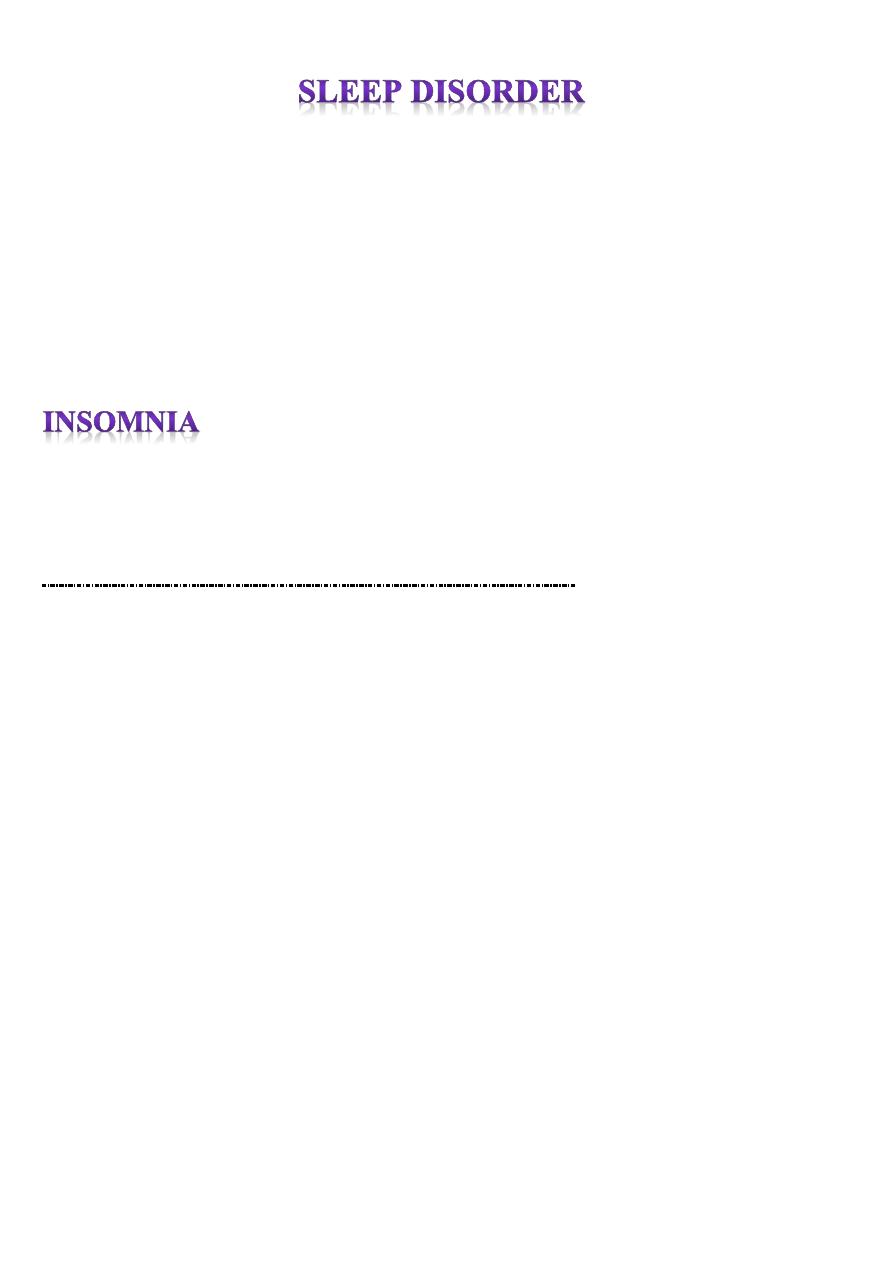
د . حسين هليل وادعة
- they are either difficulty in sleeping , less often or excessive sleeping .
- sleep disorder are important symptoms of mental disorder .
- depressive and anxiety disorder are the most common causes of sleep disturbance
up to 30% adults complain of insomnia . excessive sleepiness occur 5% of adult
14% of adult population complain of sleep – wake disorder .
- transient insomnia occur at times of stress as ( jet lag ) .
- short term insomnia occur in personal problems ( bereavement )
usually secondary to other disorder like :
insomnia
-
- painful physical syndrome .
- depression .
- anxiety .
- excessive use of alcohol , caffeine ,
- abuse of some drugs ( CNS stimulant )
- 15% of insomnia are of no causes ( primary insomnia )
- people vary in amount of sleep .
- people vary in amount of time they need to sleep .
- if insomnia secondary to another condition the later should be treated together
with general measures to promote good sleep .
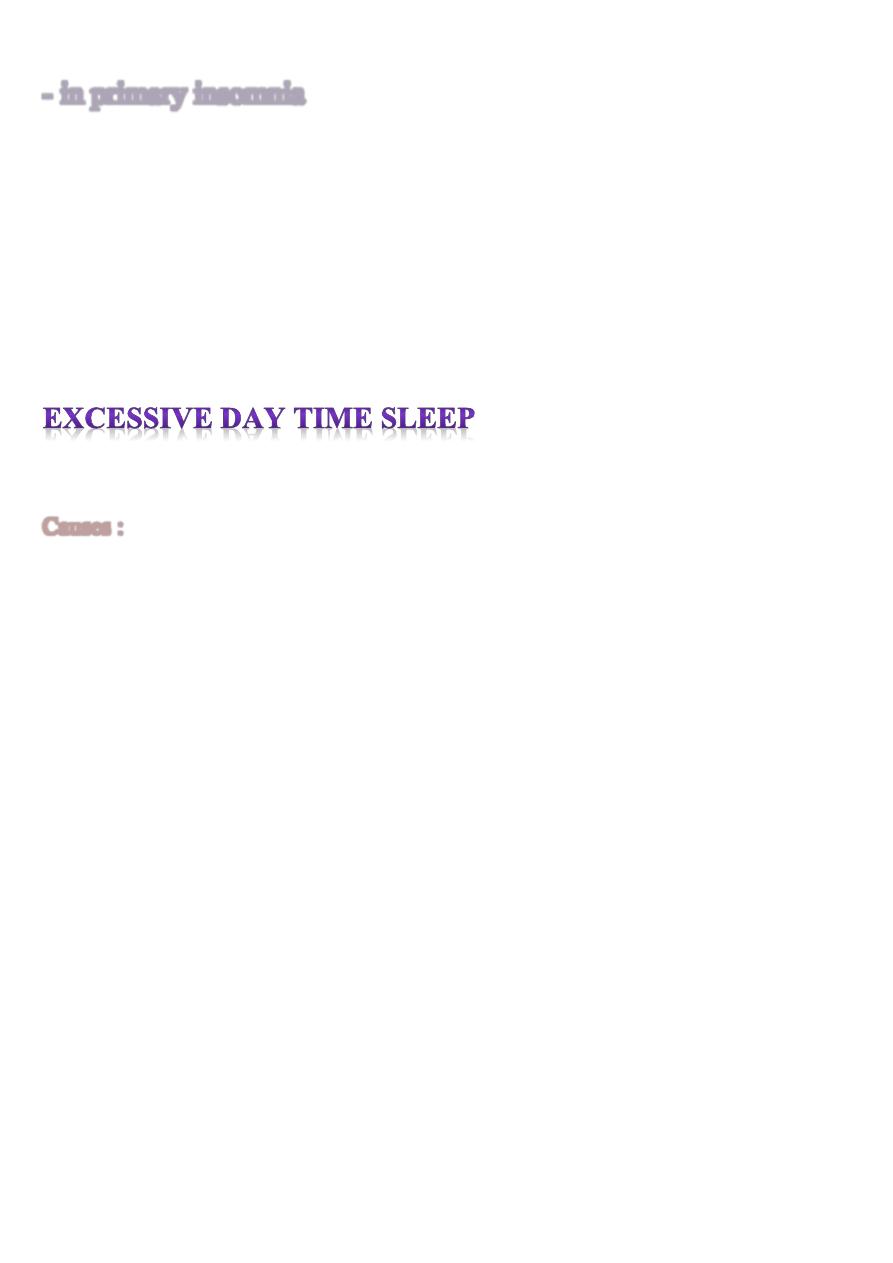
د . حسين هليل وادعة
- in primary insomnia
* it is important to avoid ( tobacco , caffeine , alcohol )
* relaxation exercise .
* using hypnotic for many nights and avoid prolong use b\c withdrawl
symptoms of hypnotic lead to insomnia
* hypnotic associated impaired daily per –for many .
* dream suppression and nights emission suppression
- it is common and undiagnosed , many cases secondary to loss night –time .
Causes :
1- insuufecient night – time sleep
* unstatisfactory irregular sleep routine or circumstance .
* circadian rhythum sleep disturbance
* frequent parasomina
* psychiatric disorder .
2- pathological sleep
* obstructive sleep apnea .
* narcolepsy .
* other CNS disease .
* drug effect .
* klein –levin syndrome .
* depressive illness .
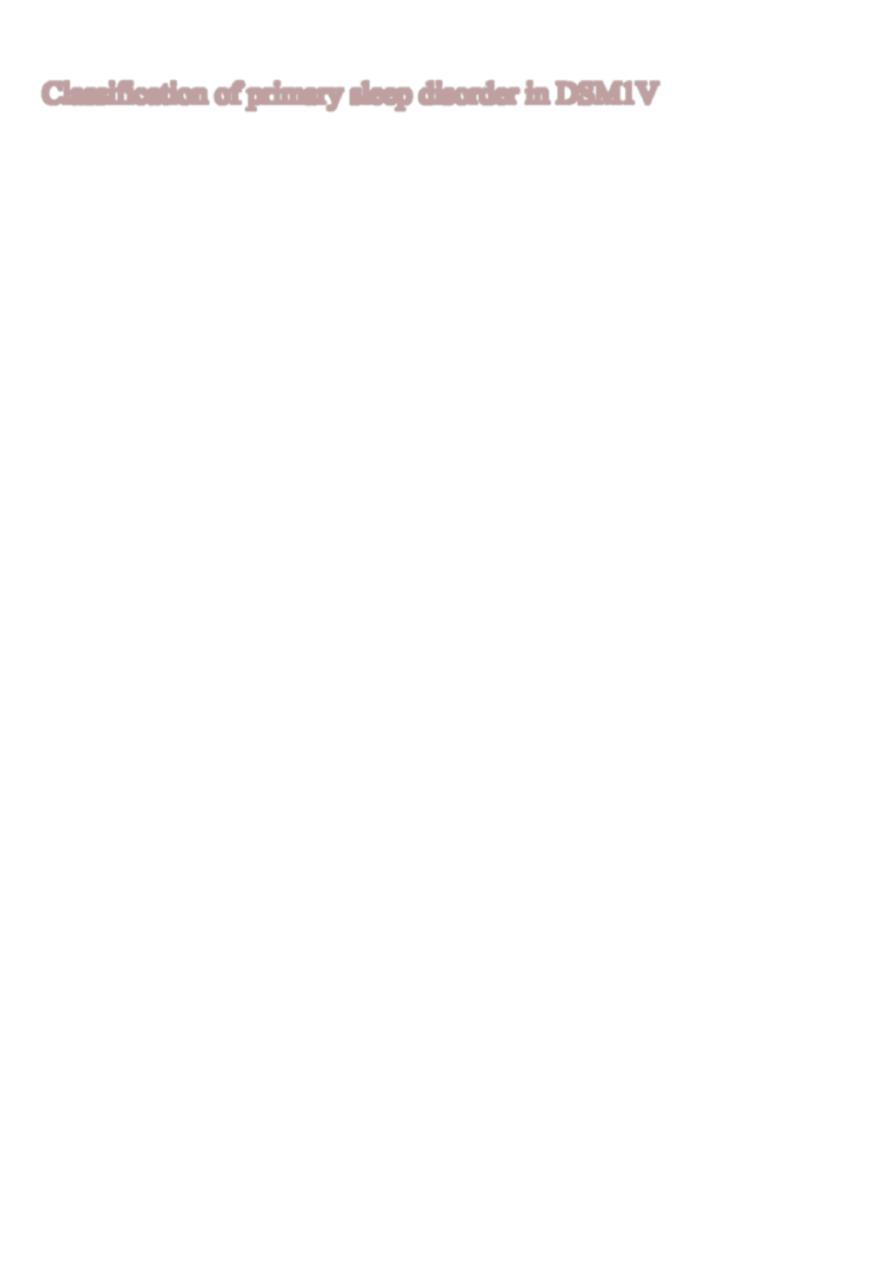
د . حسين هليل وادعة
Classification of primary sleep disorder in DSM1V
1- dys-somnias
* primary insomnia .
* primary hypersomnia .
* narcolepsy .
* breath –related sleep disorder .
* circadian rhythum sleep disorder .
* dys –somnian nos
2- parasomnia >
* night mare disorder ( dream anxiety disorder )
* sleep terror disorder .
* sleep –walking disorder .
* parsomnia nos
3- sleep disorder related to another nebtal disorder
* insomnia .
* hypersomnia .
4- other sleep disorder
* secondary sleep disorder to general medical condition .
* substance –induced sleep disorder .
Primary hypersomnia :
- the most prevalent of primary hyper-somnia .
- patient complain unable to wake complete until several hour's often getting up.
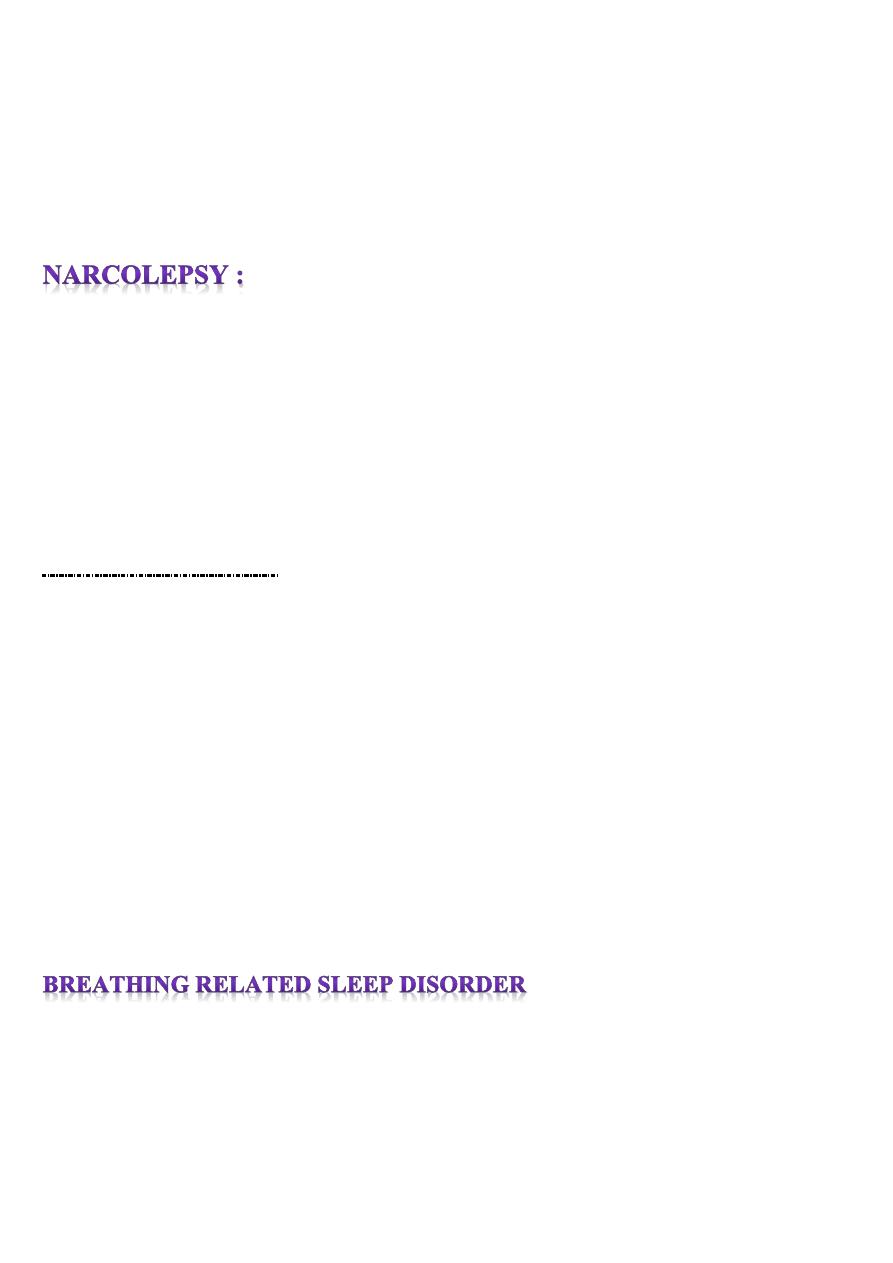
د . حسين هليل وادعة
- this time they feel confused disorder disorientated (sleep drunkenness )
- prolong and sleep night- time sleep .
- 1\2 have day time autonomic behavior
Etiology : it is obscured and most patient respond to CNS stimulant .
- usually begin between age of 10- 20 years .
- more frequent among male .
- cataplexy ( sudden temporary paralysis and loss of muscle tone )
- sleep paralysis , hypnagogic hallucination .
- +ve family history of narcolepsy .
.
dominant
autosomal
-
- HLA type DR2 compatibility .
Psychiatric aspect of narcolepsy :
- strong emotion -------- cataplexy .
- social difficult .
- schizophrenia – like disorder .
- DDx : short period of sleep – day
* amphetamine .
* TCA
- consist of :
* day time drowsiness +
* respiratory periodic +

د . حسين هليل وادعة
* excessive snoring +
* associated airway obstruction .
Treatment :
* relieving the causes of respiratory .
* continuous positive pressure .
* using face mask .
Circadian rhythm sleep disorder ( sleep – wake schedule disorder )
- jet lag is the most familiar ( another name)
- shift –work type change .
- fatigue due to work shifts .
- impaired consciousness .
- rare secondary sleep disorder consist :
* episode of somnolence and increase appetite for weeks with period of normal
late .
* patient can arise of sleep between irritable , aggressive , dis-orientated .
* hypothalamic lesion .
Parasomnia ( dream anxiety disorder )
- awaking from REM sleep in full conscious with detail dream recall .
- children experience ( 5- 6 yrs )
- stimulated by frightening experience in day .
- usually occur in PSTDs
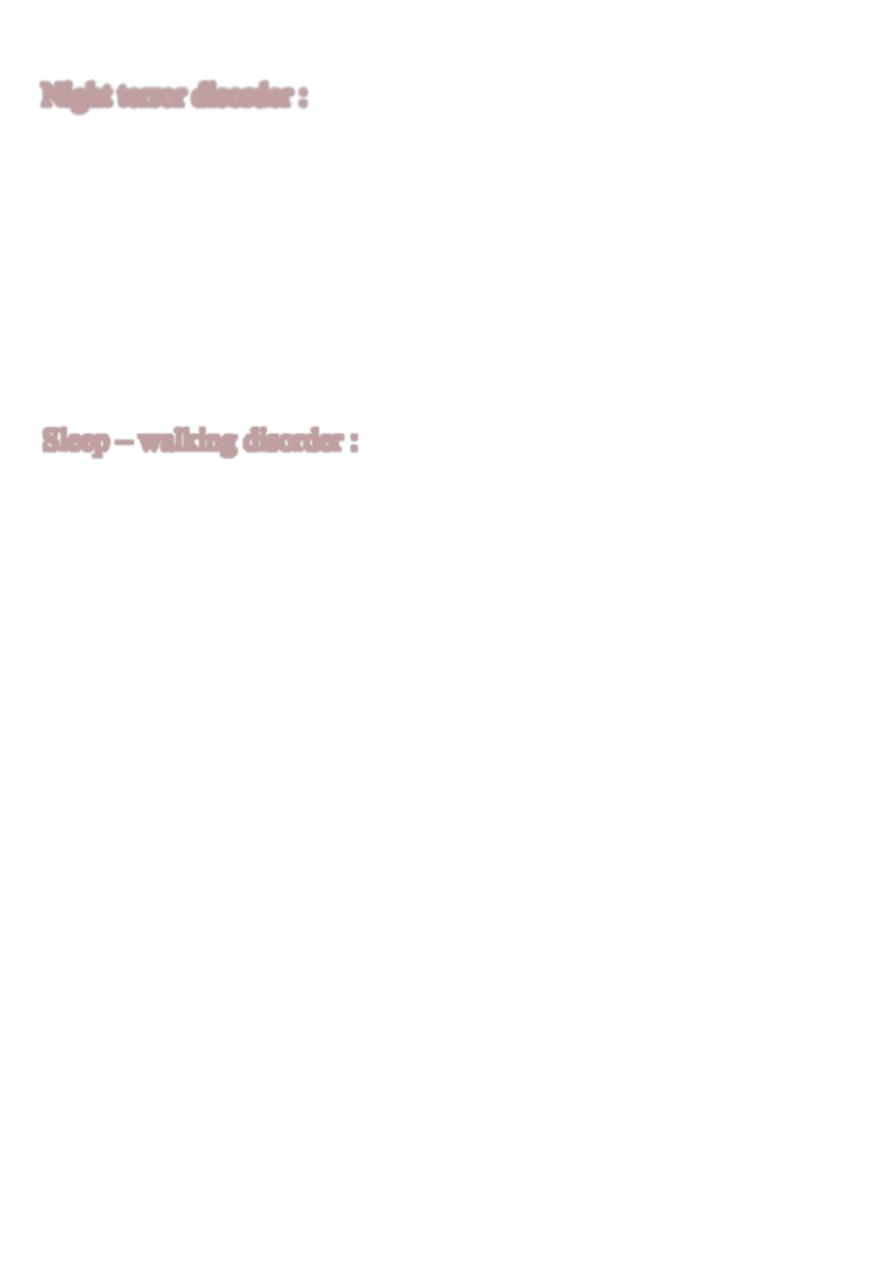
د . حسين هليل وادعة
Night terror disorder :
- less common than night terror .
- some time familiar .
- persist to adult life .
- non REM ( stage 3 -4 )
- no recall the dream .
- treatment by benzodiazepine .
Sleep – walking disorder :
- automatism during sleep ---- REM
- usually early part of night .
- age 5 – 12 yrs .
- child walk in their sleep .
- familial .
- most children not walk ( just fit up)
- other walk and back to bed
